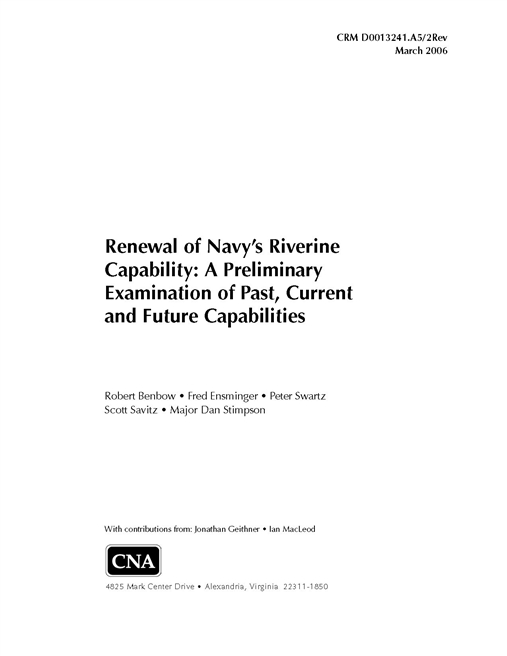In May 2005, the Chief of Naval Operations a formed a GWOT Working Group to support the current Quadrennial Defense Review (QDR). It identified several gaps in riverine capabilities, expeditionary support, and the Navy’s ability to engage countries in foreign internal defense and security assistance. Following an outbrief to the Chief of Naval Operations, the Navy announced that it would recon- stitute a U.S. Navy riverine capability and be ready to support riverine operations in Iraq in March 2007. On 1 October 2005, the Navy stood up a Navy Expeditionary Combat Command (NECC) with a prospec- tive riverine force as one of its elements.
In a conceptual sense, maritime domain is directly related to mari- time security and extends beyond our borders to sovereign nations. We surveyed 60 countries which fall into what is known as the nonintegrated Gap, where the U.S. might become potentially involved. (See figure 2 on page 43.) About 1.8 billion people live in these countries, which are characterized by 201,000 kilometers of waterways and 21 river deltas. Thirty-nine of these have modest-to-extensive riverine systems or deltas—some of which are larger than the Mekong Delta, where more than 500 craft and 9,000 sailors were employed during the Vietnam War. Of the 39 countries, eight are in Asia Pacific, nine are in South America, six are in the Middle East/Southwest Asia/North Africa, and 16 in the Sub-Saharan Africa.
When riverine forces are introduced into forward operations areas within the maritime domain, several things should be considered: access may not be automatic, operating areas may be complex, and multi-service integration may be needed. Sovereign nations can delay or deny access to U.S forces. Operating areas can have several units operating in them, blurring command and control lines and situational awareness. When operational areas grow in complexity, unity of effort can only be achieved through unity of command, well-defined objectives, and simplicity.
After developing an analytical methodology to determine riverine requirements, we identified 20 of the most relevant operational tasks and several conditions that affect riverine operations. To illustrate how the analytical methodology might be used, we examined how riverine resources might support four operational tasks across a range of three military missions: security assistance, counterinsurgency (COIN)/global war on terrorism (GWOT), and major combat operation (MCO).
Our preliminary analysis found that after the Navy stands up its initial capability in FY-07, it will be able to support security assistance missions, if it chooses, and that it will be able to take on area security mis- sion currently being performed by the Marines in Iraq. It will not have a credible capability to support river control missions until it fields its full capability in FY-10. Even then, its support of an MCO will be limited by the available resources—primarily people and craft—available within its riverine force.
Download reportAPPROVED FOR PUBLIC RELEASE. DISTRIBUTION UNLIMITED.
Details
- Pages: 190
- Document Number: CRM D0013241.A5
- Publication Date: 3/6/2006
